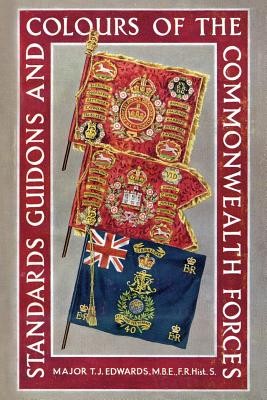
- We will send in 10–14 business days.
- Author: T J Edwards
- Publisher: Naval & Military Press
- ISBN-10: 1783314508
- ISBN-13: 9781783314508
- Format: 15.2 x 22.9 x 1.6 cm, softcover
- Language: English
- SAVE -10% with code: EXTRA
Standards, Guidons and Colours of the Commonwealth Forces (e-book) (used book) | bookbook.eu
Reviews
Description
The development of banners can be traced from the standards of ancient Greece and Rome. Fortescue states "Before the end of the 16th century the flags of infantry, from their diversity of hues, had gained the name of 'Colours'". In military organisations, the practice of carrying colours, standards or guidons are used both to act as a rallying point for troops or to mark the location of the commander. The Colours of the Infantry are a set of large flags, unique to each regiment, so that the ordinary soldier will be able to identify it straight away. This is invaluable information for the military student.
The historical association of Regimental Colours and the fact that they embody the traditions of famous regiments ensure for them the interest, not only of service men, but of all interested in matters military.
"A standard book on this subject," writes Sir Gerald Wollaston, Inspector of Regimental Colours, in his Foreword, "has long been needed, a book of reference both for the initiated and the uninitiated giving information concerning the origin and meaning of Colours and the regulations that govern them."
Here is a well documented book with authoritative statements which can be accepted as standard work on this important and interesting subject. The compilation of this book necessitated over thirty years' research, and it covers a wide range of kindred historical matters associated with Colours.
EXTRA 10 % discount with code: EXTRA
The promotion ends in 19d.20:04:14
The discount code is valid when purchasing from 10 €. Discounts do not stack.
- Author: T J Edwards
- Publisher: Naval & Military Press
- ISBN-10: 1783314508
- ISBN-13: 9781783314508
- Format: 15.2 x 22.9 x 1.6 cm, softcover
- Language: English English
The development of banners can be traced from the standards of ancient Greece and Rome. Fortescue states "Before the end of the 16th century the flags of infantry, from their diversity of hues, had gained the name of 'Colours'". In military organisations, the practice of carrying colours, standards or guidons are used both to act as a rallying point for troops or to mark the location of the commander. The Colours of the Infantry are a set of large flags, unique to each regiment, so that the ordinary soldier will be able to identify it straight away. This is invaluable information for the military student.
The historical association of Regimental Colours and the fact that they embody the traditions of famous regiments ensure for them the interest, not only of service men, but of all interested in matters military.
"A standard book on this subject," writes Sir Gerald Wollaston, Inspector of Regimental Colours, in his Foreword, "has long been needed, a book of reference both for the initiated and the uninitiated giving information concerning the origin and meaning of Colours and the regulations that govern them."
Here is a well documented book with authoritative statements which can be accepted as standard work on this important and interesting subject. The compilation of this book necessitated over thirty years' research, and it covers a wide range of kindred historical matters associated with Colours.


Reviews